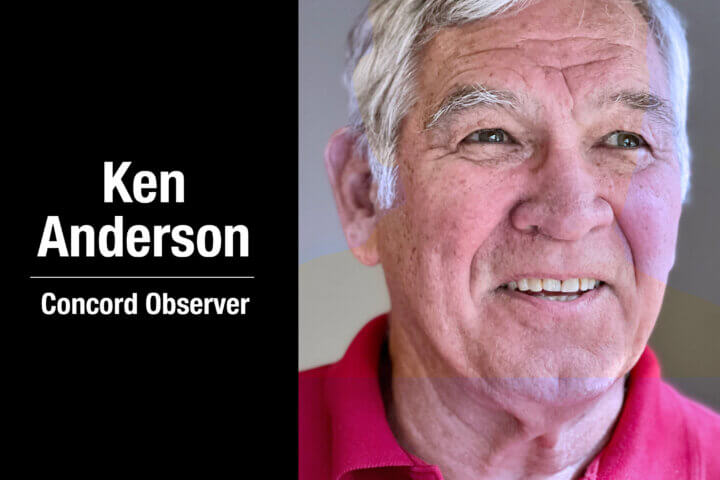
Over the centuries, Concordians have put plenty of time and energy into commemorating the events of April 19, 1775.
Not everything always went smoothly.
1825
With $500 pledged by the Bunker Hill Monument Association, Concord set about erecting a Revolutionary War monument in the center of town.
Town Meeting approved, but the vote was split, a rarity in a place that prided itself on presenting a unified front.
The first step was building a cornerstone paid for by private subscription, not taxes.
On the jubilee, April 19, 1825, the cornerstone was ready. The Masons, a secretive, fraternal group that grew from a guild of skilled builders in Europe, took center stage.
The members donned lambskin aprons and white gloves, took their tools, and examined the cornerstone. Finding it acceptable, they prayed and sang as part of the ceremony. The town still did not give universal support to the planned monument.
Sometime during the winter of 1825-26, the granite block was covered with a 20-foot tower of boards and tar barrels. The next night, someone set it on fire.
The block cracked, and the monument was never built.
The complete story is in the first chapter of “The Transcendentalists and Their World” by Concord’s Robert Gross.
1875
When the centennial rolled around, Concord had two rail lines, and the town planned a big celebration with parades and speeches.
The original North Bridge, where the 1775 fight took place, was long gone. Townspeople donated money and land to build the roughly 100-foot-long Commemorative Centennial Bridge in time for the celebration.
The Minute Man statue created by Daniel Chester French and placed at the Old North Bridge was unveiled.
During the speeches following the parade, police arrested two pickpockets.
The pavilion collapsed twice. No one was injured.
President Ulysses S. Grant came to town for the day on the train from Boston. When he was driven through town, he smoked his cigar and did not look left nor right.
The Boston Globe, on April 20, carried a transcription of some of the speeches and an account of the day. Immigration and “The Marvelous Changes” produced by technology were topics of the orations.
1925
Snow fell for the first part of the day and a cold, northeast wind greeted the thousands who came to celebrate the 150th anniversary of the American Revolution, The New York Times reported on April 21, 1925.
The streets were crowded.
Outside “the village limits long lines of motor cars and buses were parked,” the Times reported.
A film shows marchers garbed as Minute Men and troops with World War I-era uniforms, artillery, horses, and other equipment.
A newer mode of transport appeared just before the first shot was fired: An “airplane flew over the battlefield and three crows circled ominously over the flooded meadows,” the Times reported.
The weather improved as the day went on, and tens of thousands of people went to Lexington that afternoon.
— Anne O’Connor





